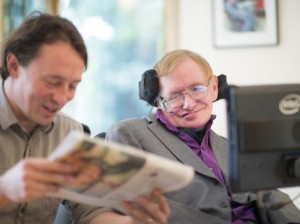 This new software has the potential to benefit people with quadriplegia and motor neuron disease. For the first time Intel, with theoretical physicist Professor Stephen Hawking, has demonstrated a new communications platform to replace a decades-old system. The new technology is said to make common tasks such as browsing, editing, managing and navigating the Web, emails and preparing documents, faster, easier and more accurate.
This new software has the potential to benefit people with quadriplegia and motor neuron disease. For the first time Intel, with theoretical physicist Professor Stephen Hawking, has demonstrated a new communications platform to replace a decades-old system. The new technology is said to make common tasks such as browsing, editing, managing and navigating the Web, emails and preparing documents, faster, easier and more accurate.
Called ACAT (Assistive Context Aware Toolkit), the software interface will enable researchers and technologists to create customised communication solutions that are enabled by touch, eye blinks, eyebrow movements or other user inputs. Working with Hawking, technology company Swiftkey has integrated software that greatly improves the system’s ability to learn from Hawking to predict his next characters and words so he only has to type less than 20 per cent of all characters.
With the platform being accessible and free, Intel and Hawking envision that those focused on sensing, text prediction, context awareness and user interface design can be built on, bringing new and improved solutions to market.
Quadriplegia and MND affect over three million people globally.
